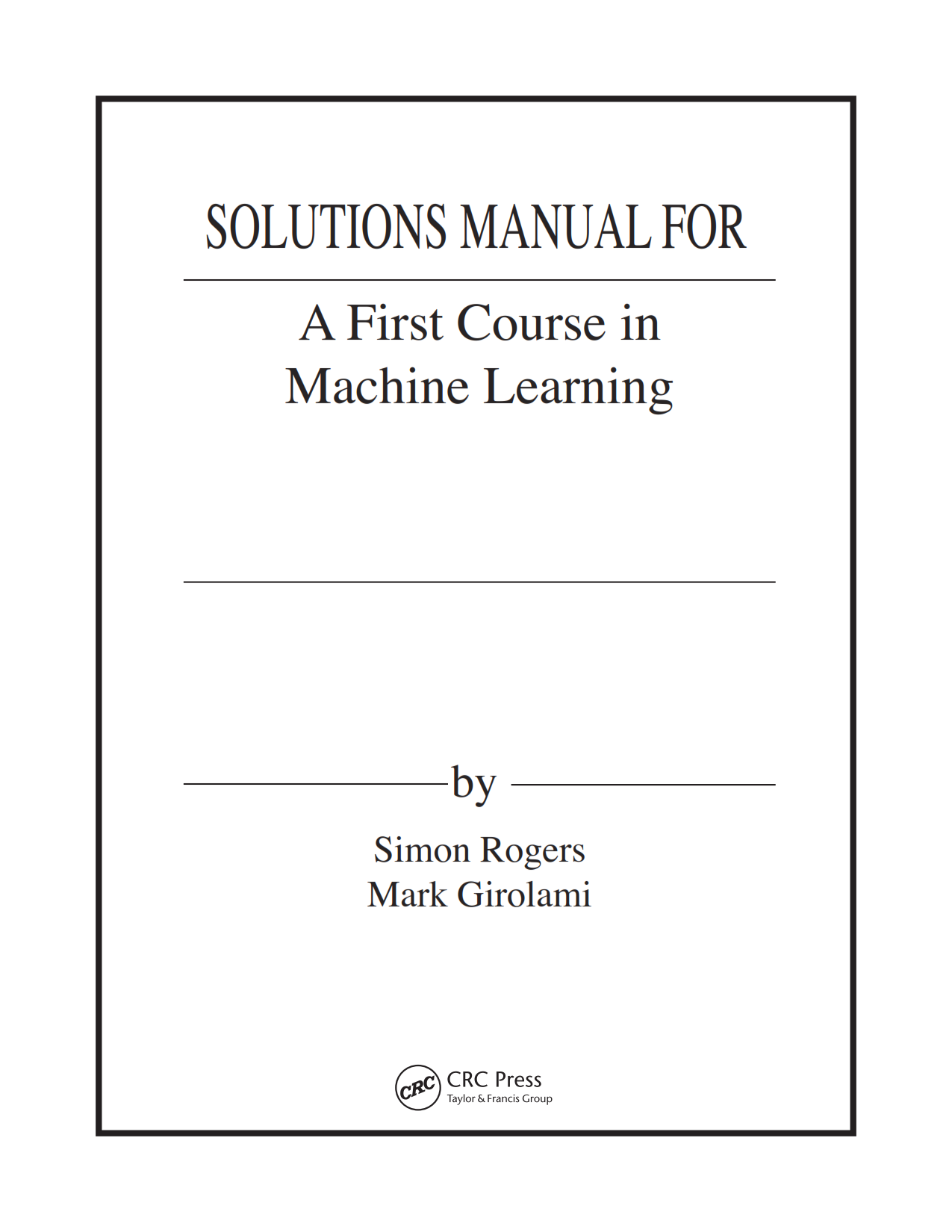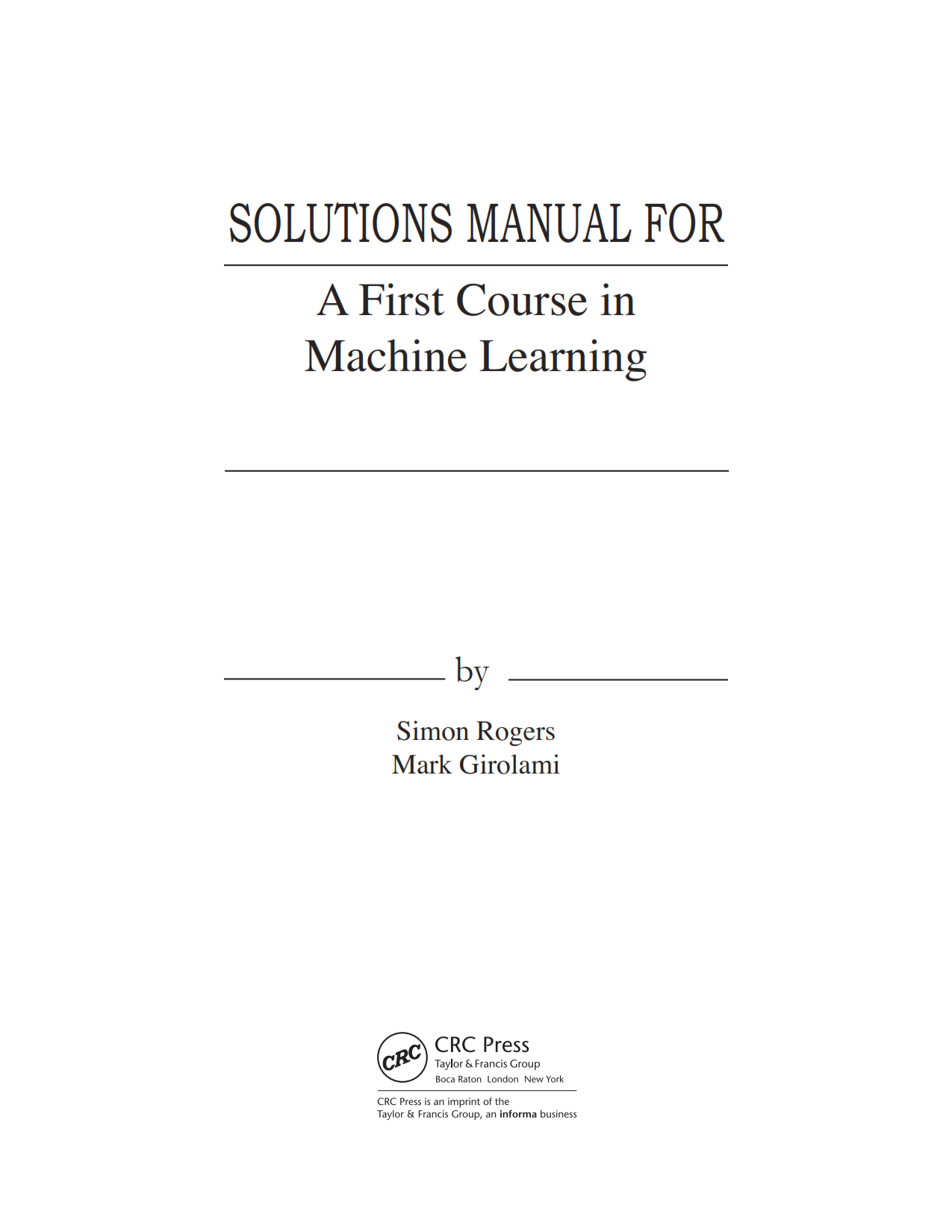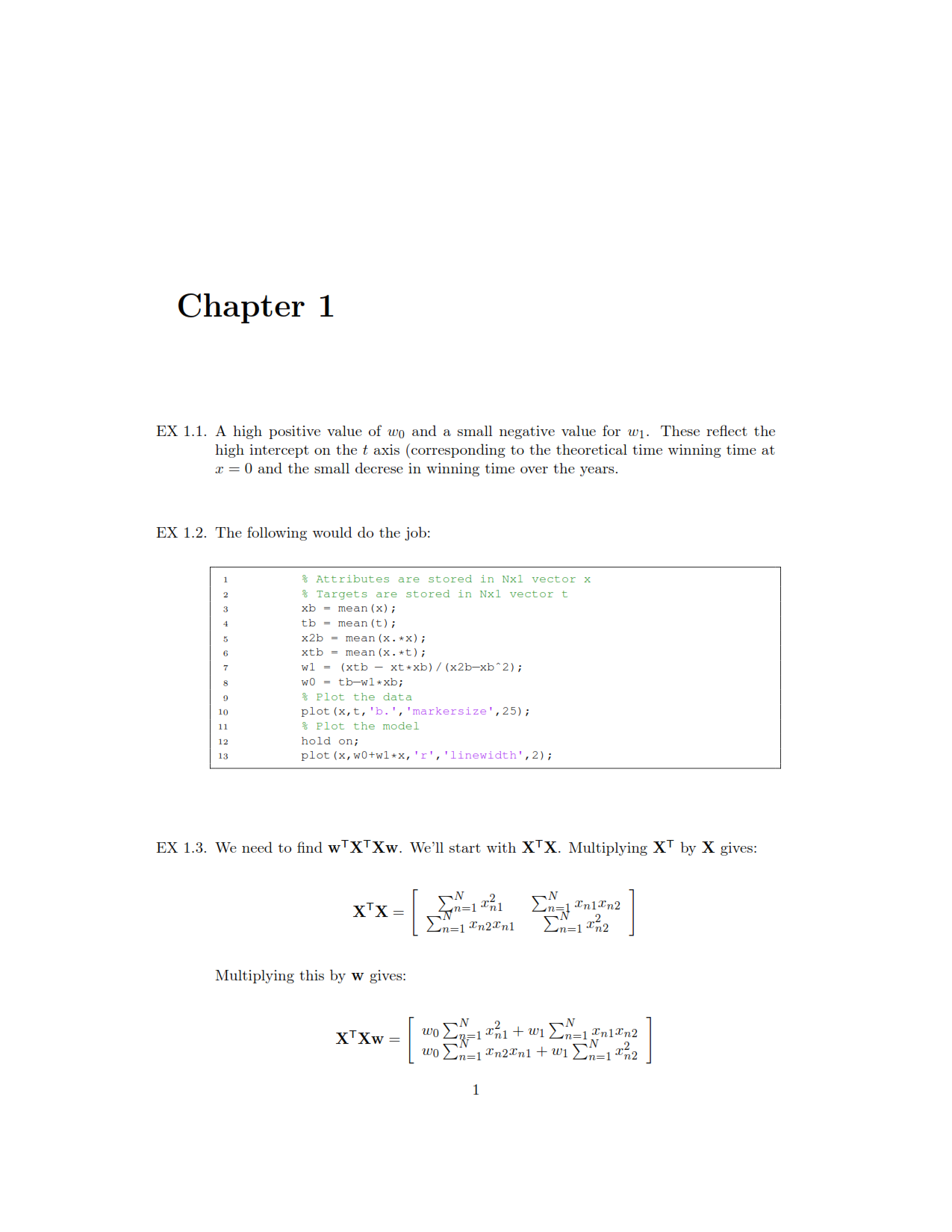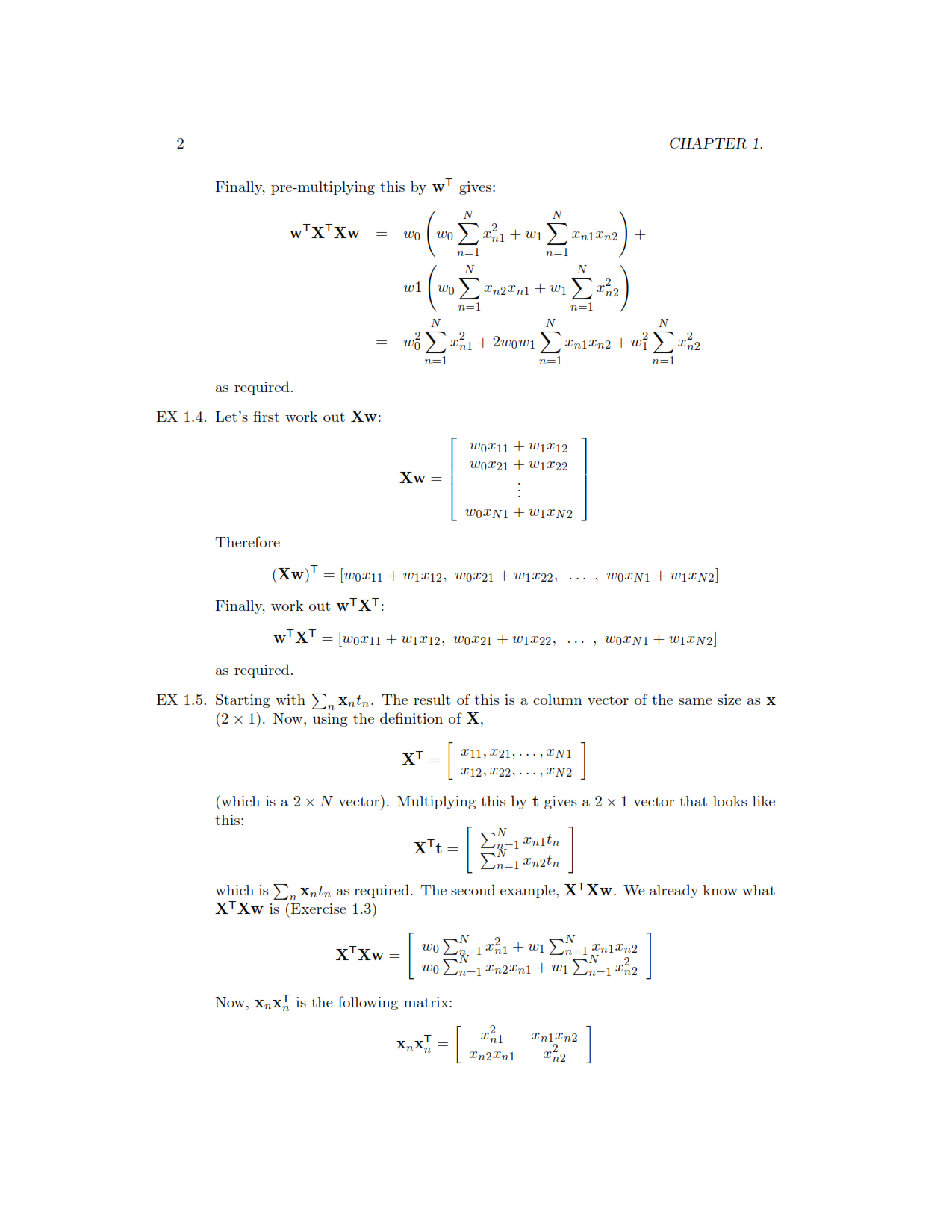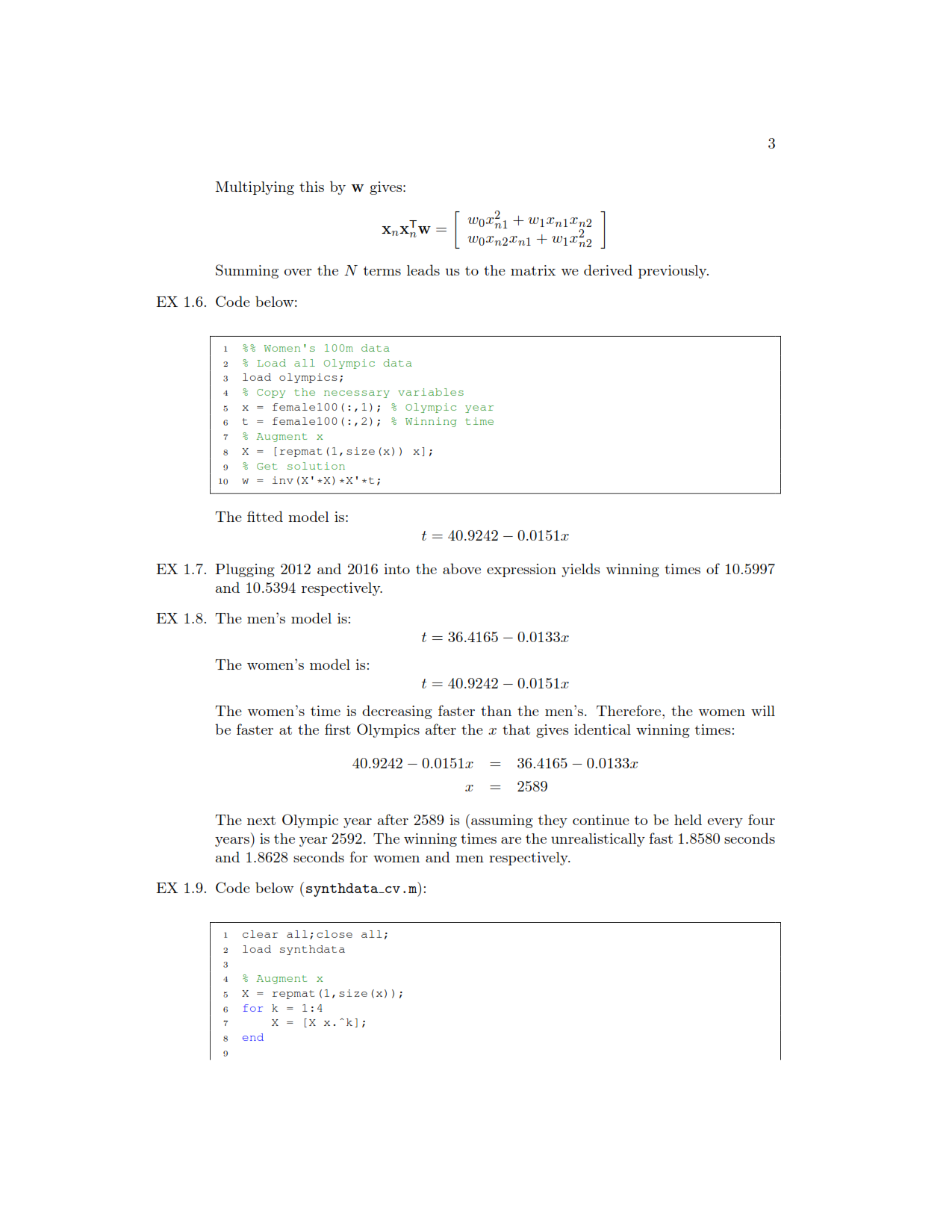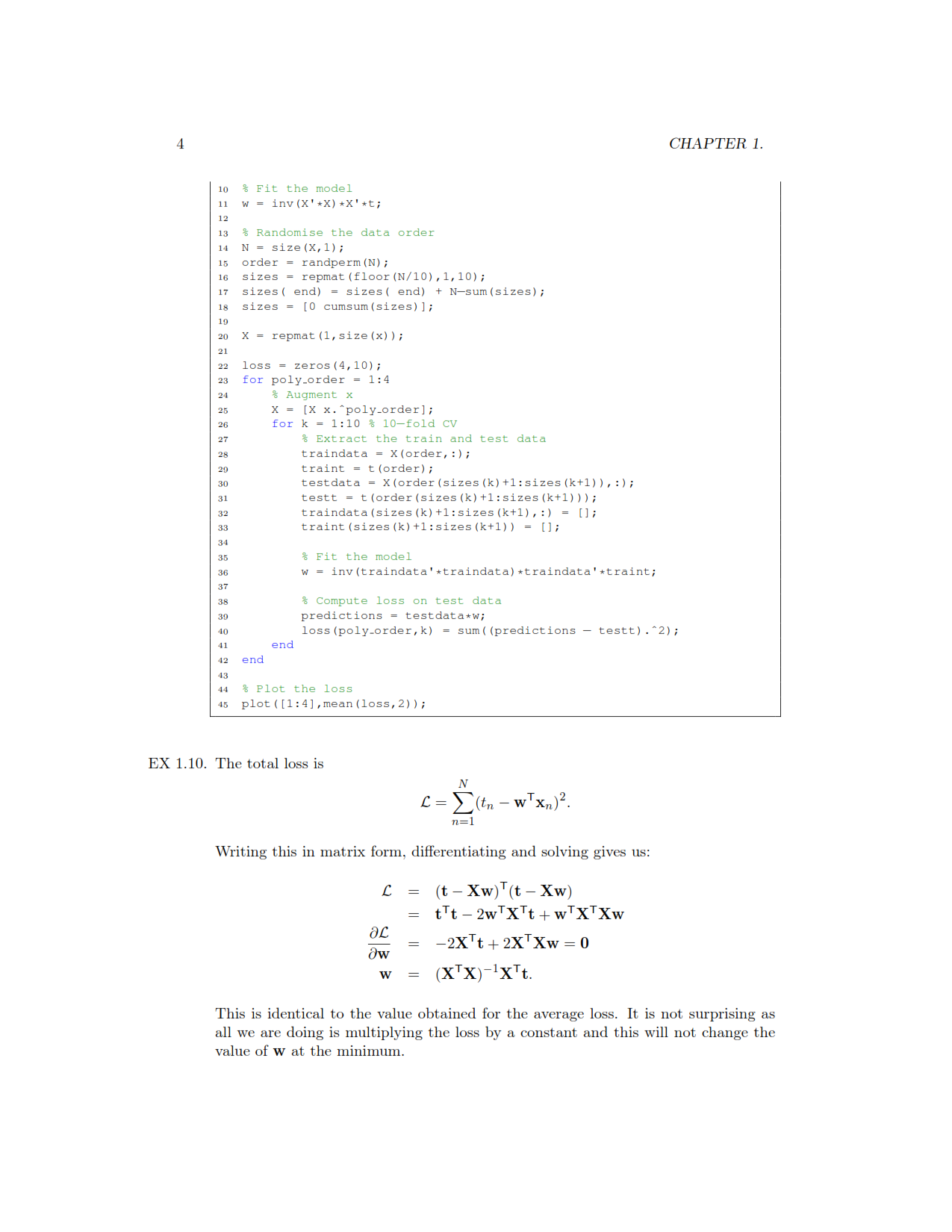Solution Manual of a first course in machine learning 1st edition eBook pdf
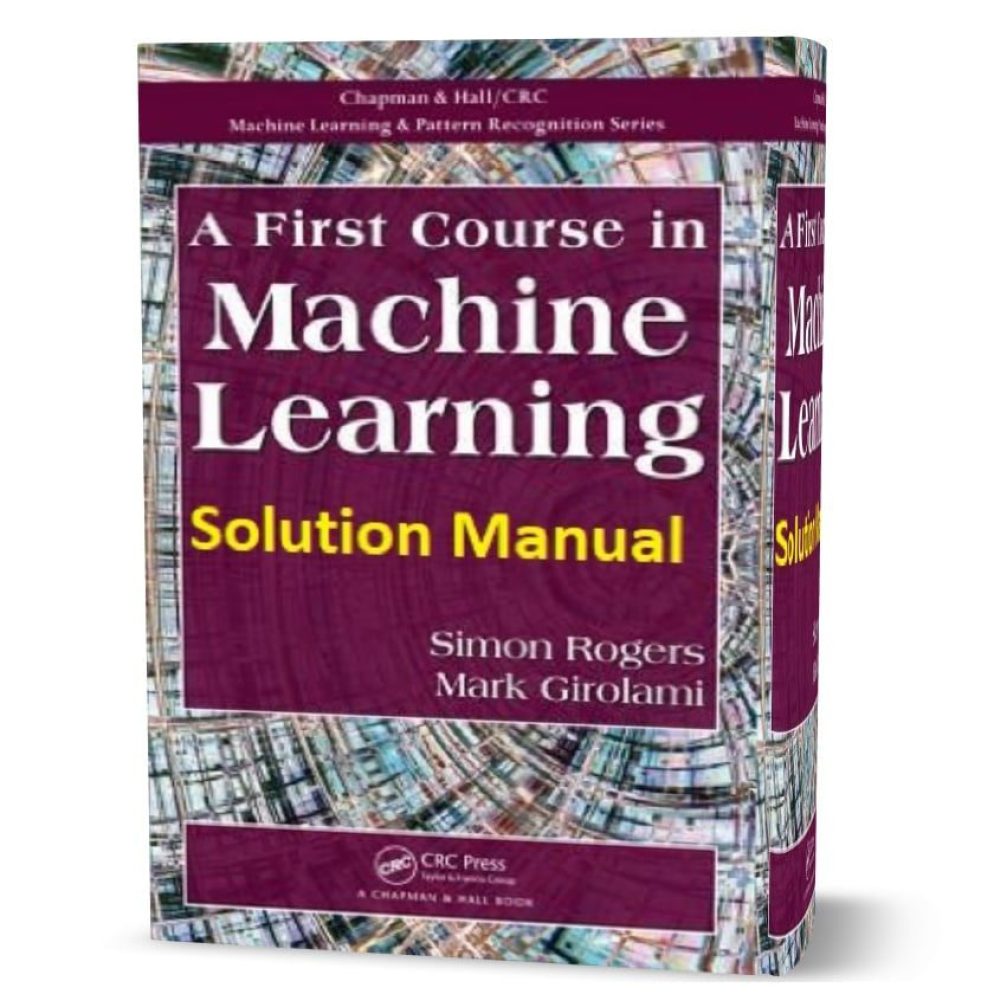
This series reflects the latest advances and applications in machine learning and pattern recognition through the publication of a broad range of reference works, textbooks, and Solution Manual and answer of a first course in machine learning 1st edition written by Simon Rogers Mark Girolami eBook pdf . The inclusion of concrete examples, applications, and methods is highly encouraged. The scope of the series includes, but is not limited to, titles in the areas of machine learning, pattern recognition, computational intelligence, robotics, computational/statistical learning theory, natural language processing, computer vision, game AI, game theory, neural networks, computational neuroscience, and other relevant topics, such as machine learning applied to bioinformatics or cognitive science, which might be proposed by potential contributors. for more Solution Manual in Gioumeh click here.
This Solution Manual and answer of a first course in machine learning 1st edition written by Simon Rogers Mark Girolami eBook pdf contains information obtained from authentic and highly regarded sources. Reasonable efforts have been made to publish reliable data and information, but the author and publisher cannot assume responsibility for the validity of all materials or the consequences of their use. The authors and publishers have attempted to trace the copyright holders of all material reproduced in this publication and apologize to copyright holders if permission to publish in this form has not been obtained. If any copyright material has not been acknowledged please write and let us know so we may rectify in any future reprint.
This solution Manual is provided officially. It include all chapters of the textbook (chapters 1 to 7). Also, figure slides are available in the package.
Other Similar eBook
Solution Manual of a first course in machine learning pdf
An important and general problem in Machine Learning, which has wide application, is learning or inferring a functional relationship between a set of attribute variables and associated response or target variables so that we can predict the response for any set of attributes in Solution Manual and answer of a first course in machine learning 1st edition written by Simon Rogers Mark Girolami eBook pdf . For example, we may wish to build a model that can perform disease diagnosis. To do this we would use a dataset comprised of measurements (attributes, e.g. blood pressure, heart rate, weight etc.) taken from patients with known disease states (responses, healthy or diseased). In a completely different example, we may wish to make recommendations to customers.
In this case, we could build a model from descriptors of items a particular customer had previously bought (attributes) and whether or not the customer ultimately liked the product (response). This would enable us to predict which objects a customer would like and hence make recommendations. There are many more important application areas that we will come across throughout this text. 1.1 Linear modelling To begin with we will consider, using a practical example, the most straightforward of learning problems, linear modelling ‘ – learning a linear relationship between attributes and responses.
Solution Manual and answer of a first course in machine learning 1st edition written by Simon Rogers Mark Girolami eBook pdf shows the gold medal winning time for the men’s 100 m at each of the Olympics Games held since 1896. Our aim is to use this data to learn a model of the functional dependence (if one exists) between Olympics year and 100 m winning time and use this model to make predictions about the winning times in future games. Clearly the year is not the only factor that affects the winning time and if we are interested in using our predictions seriously we may want to take other things The type of modelling we will consider here is often known Sar egression and was originally used in the context of genetics by Francis Galton (1877) when studying how intelligence is passed on (or not, as the case may be) from generation to generation. The term was then adopted by statisticians who developed Galton’s work within a statistical context.
Sample images of the file :
